Learn More: Got a question? Get an answer here.
Finally a Plan to Make Money and Improve Comfort
All the options on the table
See what efficiency measures will actually make your house more comfortable and save you money – even after any outlays! Learn if solar makes sense, and how to size it so that you make the most money! Make sure you get the most out of all the rebates and complex incentives you're entitled to. Find out how many improvements can be made for no money out of pocket. And do it all with an impartial tool that’s on your side!
Custom for your house
With a few minutes of information from you, this tool creates a plan that is based on your home and your lifestyle. Tell it what you will not consider doing, and it will go through all the options applicable to you to create a plan that makes you the most money. It will also identify key health and comfort issues that could improve the quality of your living space. And your plan can then easily be refined with the help of qualified home energy professionals - which we can help you find if you’d like.
Based on how you live your life
We understand that there are many ways to run the utility systems in your home. Most people make tradeoffs between convenience and energy use; some prefer to run half-full loads in dishwashers, others prefer to keep incandescent light bulbs; whatever is your choice works with the tool, it will tell you what each option is worth and you make the call!
How it works
The tool analyzes your home's system and your family's lifestyle, and evaluates all the things you can do, whether it's changing how you use equipment, changing to more efficient equipment, even installing solar panels. Then it figures out what specific things will give you the most bang whether you outlay some bucks or not, it's as easy as that! As utility prices are likely to rise as sharply as they have in the last few years, you'll be amazed how much money is at stake!
Your utility energy bill explained
Utility-supplied electricity and gas have tiered pricing schemes; the more you use, the higher the price.
Every homeowner needs to know that the cost of PG&E’s electricity in tier 4 can be triple or more of that of tier1!
If you’re in tier 4, there are a whole lot of things you can do that are likely to pay off.
Another important aspect to taking action to save money –
most homeowners prefer to keep outlays to an absolute minimum
, if any. And this tool understands how to deliver on that preference; although greatly simplified, the chart below shows a tiered price structure for electricity and an example plan that applies in many homes:
Example of Recommendations Based on Electrical Energy Prices
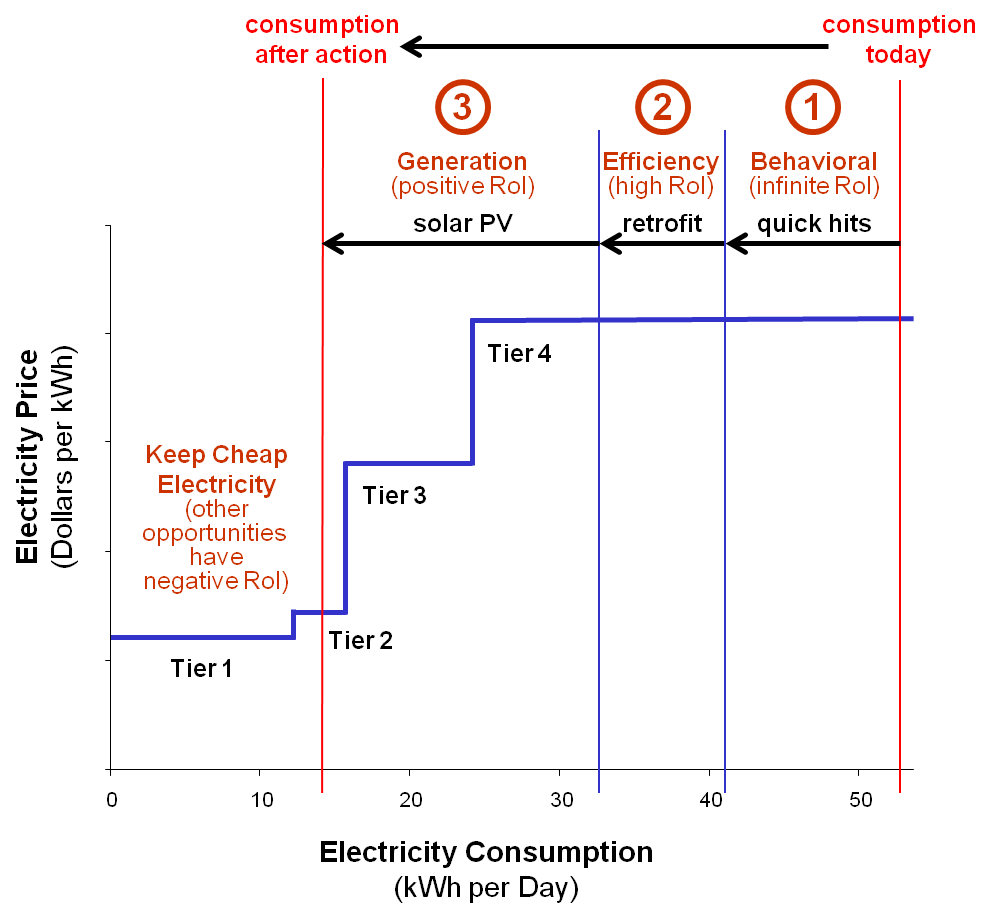
While simplistic, this chart captures what is in the best interest of most homeowners: (1) do those things that are free (like changing a few of your behaviors, if you are willing to); (2) do those things that get a lot of energy cost savings for the least amount of outlay (to the extent you are willing); then (3) do solar, if possible at your home, to the extent it just replaces the remaining expensive electricity from the utility company (to the extent you are willing).
Just do those things you want to do – the tool figures out what’s best according to your preferences!
Making your Plan
Some homeowners are looking to reduce monthly energy-related spending, whether it’s just reducing the utility bill by doing easy and free things, or reducing the utility bill a lot and including payments for any new equipment. Other homeowners are looking to improve the comfort of their home, like eliminating drafts or making the air more healthy, and are looking to fund those upgrades by reducing their utility bill (again, including any repayments for any new equipment).
Just how difficult can it be?
-
This tool is a result of many years of focus of skilled economists, engineers, financial experts and many others, all philosophically dedicated to helping homeowners figure out what is in their best interests. All the homeowner needs is to know what they want out of the process (like making the most net savings), and a willingness to spend a few minutes inputting their specifics. The tool takes it from there.
Understand your current situation
First, the tool characterizes the energy economics of your current situation:
- How many kWh or therms does each item of equipment use? How does your pattern of usage of equipment impact this?
- What are the money-making (net savings) opportunities that are appropriate to you?
- more efficient equipment (refrigerators, water heaters, furnaces…)
- different billing (another meter, different pricing e.g. time-of-use or handicapped…)
- other energy sources (solar electricity, solar hot water, geothermal…)
Evaluate your options
Then, the tool looks at all the possible combinations of different configurations for your energy system (excluding those you’ve already told it what changes you don’t want to consider), figuring out the economics for each – and it finds the best configuration for you! This is a very big and complex computation:
- What is the best approach to dealing with that confusing array of utility pricing (baseline use, tiered prices, surcharges), and weighing the opportunities between several fuels?
- What are the applicable rebates, incentives and tax credits, and how are they best used?
- If you want to finance any upgrades, what is the best option for you?
- How should all these options be done if you want a quick payback (in case you might move)?
After getting your plan, you may want help finding a contractor and/or getting an In-Home Analysis to get quotes and fine-tune your plan and take action. This tool helps with all these, in an effort to find what’s best for you!
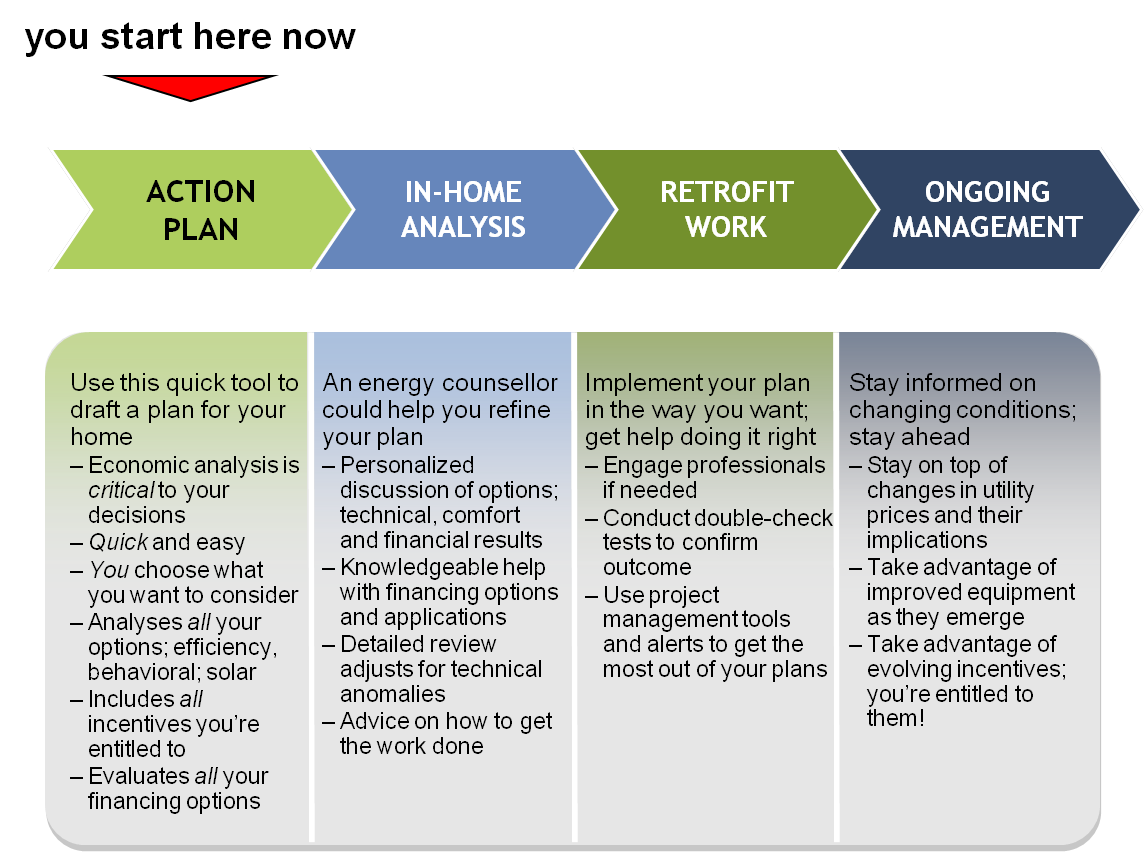
Key issues that are likely in your home
Managing your home's energy equipment (which, including the insulation in walls, windows and many other structural components is likely worth many tens of thousands of dollars) is very challenging – even for energy efficiency experts! Your home uses energy throughout the day, for heating, cooling, cooking, lighting, entertainment and many other applications. In almost every home, the systems (e.g. air conditioners), building materials (e.g. insulation), appliances, and lighting are usually not optimized for energy efficiency, and there are many opportunities to save money; even after all costs, like equipment, installation, and financing).
Example of Key Energy Efficiency Issues in a Home
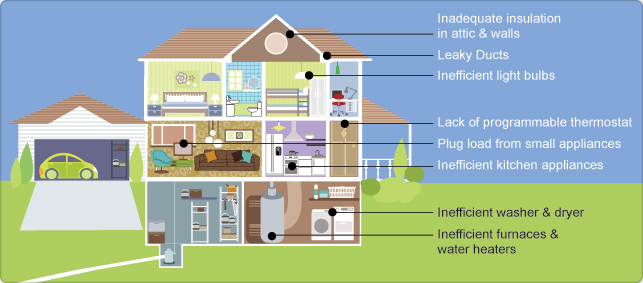
Heating / Cooling
Large amounts of electricity, gas and/or other fuels are used to heat or cool a house. Obviously the size of a house matters – all things being equal larger houses require more energy to heat or cool. But other things matter as well:
- The shell of buildings including prevention of air leakage with insulation, sealed ducts, and windows
- Your local climate, and the temperature settings and heating/cooling timing you prefer
- The size, type, age and efficiency of the heating and cooling equipment
Lighting and Major Appliances
Lighting and major appliances also use large amounts of energy in the home - and many are very wasteful.
For example, while the energy used in lighting results depends on the duration of usage, it also has a
dramatic dependence on the type of light bulb, and new CFL light bulbs use much less energy. Switching
out certain lights can quickly get you to a lower pricing tier and save large sums – every year!
Major appliances, like refrigerators, freezers, washers, dryers, water heaters and pools pumps can
each consume hundreds of dollars a year in energy. Figuring out which to replace, based on the usage
pattern in your specific house, can also help half your energy consumption – and your bill
(including the cost of replacement!).
- How many people are in your house (opening the fridge, using hot water, creating laundry, etc.?
- What size house do your appliances serve?
- What lifestyle choices would you change (if any)?
Smaller Appliances
The average home today has a large number of small appliances including computers, televisions, DVD players, and coffee makers. The issue with small appliances is that generally they stay in stand-by mode when they are not in use and continue to draw electricity. This is typically referred to as the “plug load,” and it can be reduced dramatically with ingenious devices that don’t interfere with your lifestyle at all.
Why Plan and then Act?
As with everything in life, a little thinking goes a long way – and is usually worth thousands of dollars. When the problem is complicated, like your energy system requiring technical understanding, a full view of all your options, insights into utility pricing, and many, many other factors, there are good reasons to make a thoughtful plan before making upgrades to your home, including:
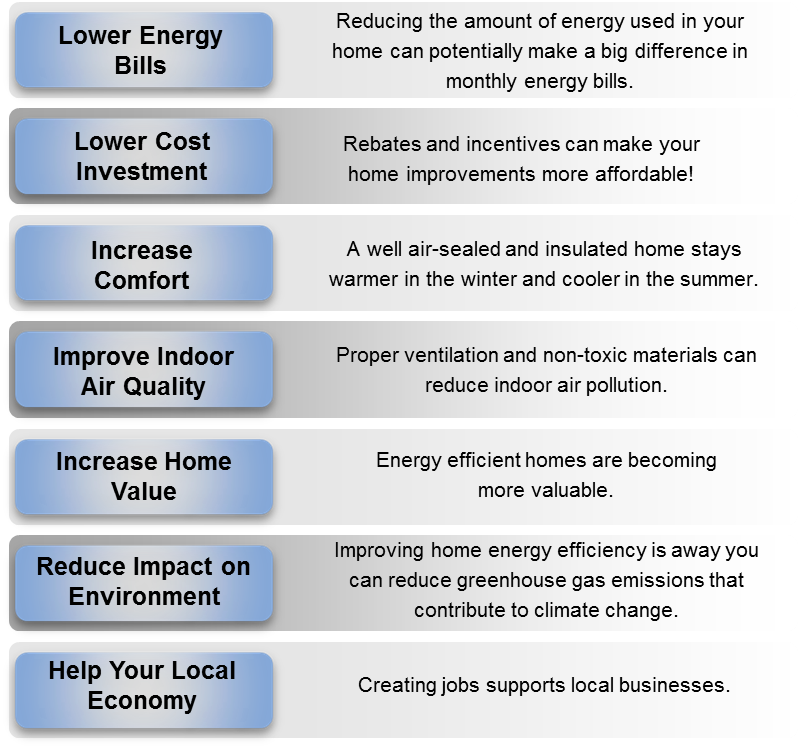
Behavioral Changes
Everyone knows that running full loads of laundry costs less than running partial loads. But the key question is how much? And how many other opportunities are there to save money by just changing behavior? This tool identifies opportunities to save money and reduce your consumption by just changing your behavior, and not spending any money. It also identifies low hanging fruit - small investments that save large amounts of money as well.
That said, many homeowners will only make changes if the numbers work for them. This tool identifies these "free opportunities", and also allows the homeowner to pick and choose which they will actually do. This is important since the more you choose to do, the less energy that can be saved from other measures - which dramatically changes what is the best plan for you:
Efficiency retrofits
Whole system approach
-
Increasing your home' energy efficiency is usually more than switching out light bulbs or buying new appliances; it is about approaching your home as a complete system with heating, air conditioning, insulation, water and other systems all working together and interacting. Often times making multiple improvements will increase the effectiveness of your home at maintaining the heating and cooling generated by your HVAC system. This can both lower your utility bills and improve your comfort.
This tool creates the best plan for you, and then can connect you to the experts and resources you need to take a "whole system" approach and finalize your plan and capture the savings that are yours.
Solar Installations
Most homeowners are interested in learning about how solar panels can lower their energy spending and reduce their carbon footprint. Solar can be an attractive investment, but it needs to be compared against the other changes you can make to your home. PV solar generators are a major investment, and often homeowners are under the impression that they should get a large system. If you’re interested in the financial returns of solar, this couldn’t be further than the truth; you must make sure you size the system correctly.
Tip #1 - Efficiency First
-
Undertake relatively inexpensive efficiency measures first (that's a critical part of how this tool can help)! In almost every home, there is a range of efficiency measures that deliver savings at much less cost than installing those expensive PV generation panels. Figure out what those measures are, and do them first – it'll likely deliver you tens of thousands of dollars over the life of the system if you size the system optimally!
Tip #2 - Don't oversize
-
Don't oversize the system and substitute out inexpensive electricity! Frankly, electricity pricing is confusing to most folks, but the short story is that everyone is entitled to a basic amount of inexpensive electricity. Buying an overly large solar system that generates power and replaces this inexpensive electricity never pays back; it will end up actually increasing your overall spending!
Installation of Solar Panels
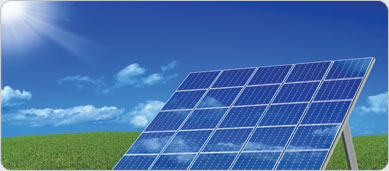
Site Evaluation
As part of an analysis of your home's energy systems, there are three principal aspects of PV solar generation potential:
- The angle of your house roof or other suitable structure/mounting platform relative to the path of the sun, also called the azimuth
- The tilt of that mounting platform relative to the path of the sun
- The shading of that mounting platform
During an onsite visit, these readings are conducted very rapidly using sophisticated equipment – allowing one to create a picture of any mounting platform's suitability in all seasons of the year. This, in turn, gives us a solid understanding of the amount of electricity PV solar panels would be able to generate at your property.
Health and Comfort
There are many potential opportunities to improve the health and comfort of your home. Performing a home retrofit can significantly improve air quality and lower drafts. This tool identifies opportunities to improve your health and comfort, and can seamlessly connect you to home energy professionals to discuss the path forward.
Comfort
-
For most people, their home is their largest investment. And yet time and time again, people live in homes that are uncomfortable; with drafty rooms that never seem to heat up in the winter or cool down in the summer. By undertaking upgrades like air sealing windows and doors, and adding insulation, your home can be much more comfortable.
Health and Safety
-
On average, most people spend about 90% of their time indoors. Therefore, from a health viewpoint, the quality of indoor air is even more important than outdoor air. And a good indoor climate decreases the number of illnesses and improves comfort.
The quality of indoor climate is affected equally by the air filtering and efficiency of heating, ventilation and air conditioning equipment, construction engineering and quality, building materials, as well as building operation and maintenance.


